The Proa Sidecar
It was a great pleasure last week to open an email from Robert Zabukovec, who proceeded to share his experience sailing an astounding proa of his own design: SIDECAR. Why astounding you may ask? Proafile gets a lot of “unusual” sailboat ideas sent along over the years and I like to think I’ve seen it all, but this is the first time I’ve seen a shunting biplane proa rig. The unusual rig works well and the canoe is beautifully thought-out and built.
Much thanks to Robert for the submission, I’m sure you will be as fascinated as I am!
INTRODUCTION
I first became aware of proas as a teenager through my father, who was fascinated by the J.S. Taylor flights of fancy in the sixties. I have been a dinghy, keelboat and offshore racer for over 60 years. I built some of my own racing dinghies. Not sure why, but I started doodling proas in the early nineties. I also doodled all kinds of monohull boats and entered yacht design competitions occasionally, even got an honourable mention in the RORC competition for the Whitbread 30 yacht.
I decided to go mad for the Yachting World 2000 yacht design competition and drew up a proa (see photo above), incorporating many of my (naive) thoughts at the time. The overall concept has evolved ever since.
When I retired, I was looking around to buy a suitable second hand yacht. Nothing was sufficiently interesting for a good enough price, and certain in the knowledge that whatever I bought, I would also spend a lot of money upgrading, and still not be happy. So I thought why not build a proa?
SIDECAR DESIGN PARAMETERS
- Fast single handed daysailer to minimize overnight passage making.
- Fast shunting. Navigating King George Sound (Tasmania, AU) usually requires 5-6 short tacks in gusty, shifty conditions. Sometimes in both directions because the wind can swing 180 degrees during the course of the day.
- Overnight/short stay accommodation for 2-3 people.
- Flat bottomed for dynamic lift and ease of construction.
- Reversible rudders for faster shunting. Preferably liftable.
- Electric auxiliary. I am no mechanic and hate noisy smelly gas outboards which decide not to work when you really need them.
- Beachable and preferably containerable.
- No netting or trampolines. Minimal bow work.
- Contemporary aesthetics and rig, not a Polynesian copy. Aerodynamic to minimize air drag.
And… my wife hates boats which heel and wanted to be comfortable whilst she reads a book, preferably down below with a good view outside and communication with me on deck.
STATISTICS
Length vaka: 9.50m LOA
Length ama: 6.25m LOA
Draft boards up: 300mm
Draft boards down: 900mm
Beam: 5.57m BOA
Beam Bc/c: 4.50m
Displacement light: 1060kg
Displ vaka: 720kg static
Displ ama: 240kg static
Displ crew + consumables: 100kg
Sail area main: 29 m2 fully battened
Jib: 11.4 m2 fully battened
Light staysail: 16 m2 on furler
Ratios
34.07 Displ/Length
39.86 SA/Displ
0.53 Cp vaka
0.53 Cp ama
14.42:1 L/B vaka
16.07: 1 L/B ama
Base Speed: 11.4 knots average. White sails only
RIG
Dyneema stayed rig. Carbon spars. Circular section 92mm OD mast. 110x80 elliptical section booms. 70mm OD tapered sprit. All 3mm WT. Sails hanked to luff stays. No heavy expensive mast tracks and batten cars. Fixed strut vang to mainsail. No heavy expensive jib tracks and cars.
FOILS
2 x reversible through hull cassette balanced rudders, NACA 0010 section.
HM carbon shafts, tiller steering.
No centerboard, chine runner on lee side of vaka.
AUXILIARY
Reversible 160 lb thrust 48 volt Pelican electric trolling motor in cockpit.
Power: 2 x 60 amp 48 volt lithium batteries in ama. 30 kg total.
Charger: 2 x 145 watt Solbian PV panels on cabin roof.
CONSTRUCTION
190x12 Paulownia carvel planking, edge glued with PU glue. Double planked vaka bottom. Inner layer laid longitudinally, outer layer cross planked. Ama mostly cross planked.
Paulownia is a very light pale colored and quick growing wood originating from China. It has a weight of 260-280 kg /m3, so around 80% of the weight and strength of Western red Cedar, around a third of the cost and slightly softer and also rot resistant. It is plantation grown in Australia and many other parts of the world, and can be harvested and re harvested every 8-10 years. Tasmanian Oak was used in areas of high local stress, where loads could not be sufficiently dissipated.
There was a lot of spiling, and some curved areas could only be done by routing out half depth U channels at spacings to suit, spiled, then filled and faired with epoxy bog prior to glassing.
Exterior epoxy sheathed in 450gm/m2 glass, double layer on vaka bottom to chines. All timber sealed in epoxy, WEST style.
Bulkheads and permanent frames CNC cut laminated Paulownia panels. Bunk tops and other structural pieces CNC cut 6mm Okoume plywood. Temporary frames 19mm CNC cut MDF.
The build took just over three years, with the vaka being built under the back verandah, and the ama and the wing aka built in the shed. It was a leisurely pace, and i also lost time during the winters due to temperatures too low for epoxy work.
The three pieces were them assembled on the back lawn, then rigged and finished off prior to trundling it across the lawn and launching it into a small inlet off King George Sound, July 2017.
SAILING
Sidecar is very responsive, it accelerates (and decelerates) remarkably quickly. It is sensitive to trim and weight placement. It rewards good helming and trim, and equally punished poor handling. The boat has 2 reversible rudders, and either or both can be used, depending on conditions and speed. Generally, I steer with the aft rudder, leaving the forward rudder to feather and find its own way through the water at more than 4 knots boat speed. At speeds less than that, it is better to use the forward rudder, with the aft rudder locked off and used as a centreboard. When I need to do big, fast directional changes, and to crab sideways up to a dock or mooring line, I use both.
It is happiest and fastest going upwind. There is little speed gain off the wind, unless the boat is over canvassed upwind.
Top speeds so far, in mostly fair conditions no more than around 15 knots gusting 20: Upwind: 12.7 knots, reaching: 16.3 knots, DDW: 13.6 knots. White sails and single handed.
Shunting sequence involves dumping both sails simultaneously (I don’t bear away at all), pushing both helms down so that they will flip by themselves correctly and then sheeting in the mainsail to beam reach position, the boat will literally stop dead and spin towards the new wind without using any rudder at all. The jib is quickly sheeted in to near close hauled, then the rudders are straightened up and used to control the rate of round up when sheeting in the mainsail. Pull the mainsail in too fast, and the rudders can’t cope. A lot to do with one pair of hands, but pretty quick in lighter conditions where the boat doesn’t round up too quickly and the sheets can be hauled in faster. In heavier air, the boat can respond too quickly if you get it wrong, so more care is needed to avoid stuff ups. With extra pairs of hands, the whole process would be much more simultaneous, controlled and faster again.
Sidecar flies the ama at 9 -10 knots boat speed at around 3 degrees of heel, and the helm becomes noticeably lighter when it does. A wonderful sensation, but you need to constantly trim the mainsail and feather into the gusts and bear away again in the lulls to keep the ama skimming. I have yet to let the boat heel much more than 15 degrees. I have gone beyond that when gear has broken on the boom and very recently, the boom broke itself, and gone to 30-45 degrees, but thankfully the boat seems to stop there, probably a combination of leeward buoyancy shift, auto dumping of the jib and shadowing of the mainsail itself.
It is also very dry, most spray flies off to leeward, thanks to the curved forward topsides and the wing aka. There is no bidet style flushing up through netting strung between more conventional aka beams, and working on the wing aka with a jib or anchor is far drier and much more solid and stable than bouncing on netting or balancing on a narrow foredeck. It provides easier access on and off the boat also for anyone who is not agile or confident enough to bounce across netting. It is also great for storage. Anchors, mooring lines and warps, fenders, brushes, boat hooks etc are all stored in the wing aka locker well out to windward, but still within easy reach of the cockpit. And finally, because it is an inverted wing, there is the possible benefit of some down force RM when it blows.
EVOLUTION

Sidecar started life with 2 lifting windward side hung rudders and a two way asymmetric canting centerboard. Canted to windward, it provides earlier ama uplift and height to windward. It could lift the ama at around 7.5 knots, 1.5 knots sooner than otherwise. Canted to leeward, it provides more RM and height to windward. But the forces were so great, it took 3 iterations of hinges before it was strong enough, and despite 24:1 plus ratios, the associated controls still weren’t man enough and cumbersome. I also had concerns that the canted centerboard in its full retracted state could still catch waves in heavy conditions down wind, so I eventually took it all off, with no regrets. I also reckoned to be losing around a knot of boat speed with the centerboard deployed, so it was hard to see how VMG was significantly improved, if at all.
But the biggest original problem was one of helm balance and weight. The rudders were fairly closely spaced which facilitated the tiller steering arrangements. Despite being the same proportions and spacing as the (in)famous proa Bucket List, even with the centerboard down, the rudders were working hard with poor response and always on the point of stall.
Without the centerboard (during board mod/repair times) the boat was uncontrollable upwind. Making the rudders bigger, deeper didn’t really work, it just made the rudder loads much larger. Adding a skeg under each bow (image below left) didn’t work either. It was great for sailing in a dead straight line, but much worse response times and hugely increased rudder loads because of it.
 Left: bow skeg. Right: chine runner.
Left: bow skeg. Right: chine runner.
I then put in bow trunk cases to take either bow board cassettes or two way rudder cassettes. I made bow boards first and kept the larger rudders. Raising the front bow board provided the necessary balance and gave an immediate improvement in handling and performance. But it was 3 foils doing the job of 2 and now having to raise one board and drop the other on every shunt, taking more time, something I wanted to avoid from the outset.
Sidecar also has a chine runner (image above right) on the leeward side of the vaka. I was aware of their reported success on Matt Layden designed mini cruisers, and having experienced the dramatic effect of simple wooden skegs, I thought nothing to lose, easy to put on, easy to cut off. As it happens, I believe they are very effective and can recommend them to anyone wanting a simple effective solution especially if your hull is flat bottomed and provided you fall within the Layden parameters.
Sidecar now has reversible cassette rudders nearly double the distance apart of the original rudders, and have the same effective size plus some end plating benefit from the flat bottom. Rig has stayed largely unchanged. I now carry a bridle attachment for the windward jib hoist, which eliminates the catenary action of leech tension on the weather shroud and the slight CE shift aft.
All sails are hoisted and sheeted on 2:1 purchases which means that everything can be done by hand, without winching, which is faster despite the extra rope length involved. The winches are used for snubbing and making off, and when I need to use a handle, it is time to reef. I have a 12:1 cunningham and an 18:1 foot/ leech outhaul.
The original motor was a Rick Willoughby one off special, worked, but proved to be impractical to deploy and store and was underpowered. The 160lb thrust trolling motor I have now, didn’t exist when the boat was built. I had to make a custom clamp to allow the motor to work at 90 degrees to the normal clamp orientation. It cruises at 3-3.5 knots with a top speed of 5.5 knots in flat water.
Sidecar is sensitive to trim, because it is so light and narrow. It I stand on the vaka bow it drops 7– 8 cm. It seems to sail best with slight aft trim and ama nose up. With my wife on board, when short tacking, she goes below to make room in the cockpit, and she shifts from one end of the saloon to the other with each tack in heavier breezes. Similarly, sitting to leeward and raising the ama as much as you can, improves speed and balance.
BI PLANE RIG
Without doubt, the rig that gives the best all round performance balance and handling on most yachts, whilst keeping rig height, heeling moment and weight down is the sloop rig.
Proas are no exception. On a proa however, sloop rigs have a significant disadvantage when it comes to shunting/ tacking, in that the foresail needs to be furled or taken down, swung over or carried to the other end of the boat and hoisted or unfurled again, with a lot of time lost each time. Or duplicate the headsail (all of them!) at the other end of the boat so that you furl one jib and unfurl the other simultaneously with interlinked furlers. Time loss is minimised, but there is duplication of foresails, furlers and sheets which is significant extra cost, weight and aero drag.
By setting the foresail out to windward and making the rig “Biplane” you avoid these issues and put the weight of the fully battened jib and all its controls in the best possible place on a proa. In the middle, and well out to windward. Being fully battened, it can remain on the boom, out of the way, saving set up and stow time. It also means less flogging with better setting and longevity.

Other advantages of the windward jib, apart from ease of shunting compared to a sloop rig and helping to keep the bow down during the manoeuvre, are that you are in the shade more often, it hang sets in light weather and it has a very low heeling arm. Running deep down wind, there is no shadowing, and the jib is more stable and controllable than goosewinging and can be used to deflect air at a better angle towards the mainsail. When a proa heels into double figures,, the power from the jib is automatically reduced due to heavily canted angle of the weather shroud, which is a lot more in proas, because the weather shroud angle is much larger compared to other multihulls due to the mast being well to leeward.
There are other theoretical advantages for bi plane rigs, but that explanation is for another time.
The BIG downside of a windward jib is that it is always behind you, so it is hard to check and maintain trim, which seems to change more than with a sloop rig. It can be luffing quietly, without you being aware.
Sidecar was also set up with larger light weather sails, flying off sprit which is housed in the jib boom. It has had limited success, improving speed in light and sloppy conditions, but at the expense of pointing. I am still working on that one. I get the feeling that it probably has a detrimental effect on the mainsail and extra sail would be best set off the bow, when doing long legs and time lost shunting isn’t significant in the scheme of things. I have shunted with all three sails flying.
The “mainsail” on Sidecar is actually a balanced jib on a luff stay. The balanced area is maximised when compared to an aero or balestrom rig, and by giving it a large square head and a straight vertical leach, the balance area of the sail can be further increased, all of which means that the CE of the sail aft of centre is minimised and high level sail area (in stronger, freer and less disturbed wind) is maximised. Care has to be taken to ensure that when reefed, as the CE moves forward, it doesn’t become over balanced as can be the case with many aero rigs. There is an additional safety margin with sidecar’s mainsail in that when reefed, and the head well away from the masthead, there is a fair amount of catenary action, with the leach pulling back the head and luffstay like a bowstring, giving the residual sail more rake and less CE shift forward.
Some say that a sail-less mast causes more performance loss through drag than one with a sail attached despite the performance loss caused by mast induced turbulence along the mainsail luff. They may be right, but the weight and cost savings are enough for me.
IMPROVEMENTS
Sidecar is still prototype, with still lots to learn, tidy up and experiment with, especially the rig and chine runners/foils.
Sidecar 2 if built today based on the original criteria, would have spray step chines forward, to further minimise spray, increase forward reserve volume, and make the forward bunks a little wider.
I would make a bigger root chord on the wing aka, to increase cockpit size and storage and deck space with improve stiffness outboard. The larger cockpit, especially longer would make more room for others and increase trim options. It otherwise works perfectly single handed. Everything is close by.
It would have a larger balanced windward jib end plated to the wing and a slightly smaller balanced mainsail still end plated to the cabin top. Sidecar’s jib is currently 40% of the mainsail area. I would look to increase it to around 50%. This should improve helm balance, and reduce heeling moment for the same sail area. It might also improve the biplane effect, certainly at lower wind speeds.
I would add an extra halyard to leeward, so that either LW jibs or code Zero spinnakers (not furled) can be hauled out to the bows on an endless tackline, sheeted off the main boom and end for ended for long distance sailing with little shunting. Faster and easier to balance/self steer.
The ama would be deeper, the same depth as the vaka for more lateral resistance in lighter going, with slightly more displacement and more reserve volume above the waterline, but still the same length. Currently the ama is 30% of vaka displacement. I would look to increase that to around 35%.
I might also add a chine runner to further increase lateral resistance whilst the ama is in the water. When motoring at slow speeds in wind, there is a noticeable difference in side drift between wind coming from leeward as opposed to ( designed for) windward side, because the vaka chine runner is only on the leeward side. So I might add a windward one to one or both hulls as well.
I also did a comparative analysis of a number of multihulls and proas and found that proas like Jester and Madness, (and I would guess Jzerro as well) have a lateral resistance area/ sail area ratio (working rudder excluded) of around 12%. Sidecar is 8.5% and Bucket List and the Seacart 30 tri is around 7%. I would be aiming at around 10% next time, with more coming from the hulls, especially vaka. Comparatively, Hull LRA/ SA’s respectively above are around 10%, 7% and 5.5 %.
I don’t need it currently, but should I decide that I want to improve VMG, a pivoting 2-way asymmetric centerboard can be hung off the leeward topsides. The extra area gives more CLR and when raked, better helm balance. The centerboard is already made by cutting down and modifying the original.
LINKS
Sailing Anarchy thread: Dear Mr Sidecar
Youtube: Sidecar: A Modern Pacific Proa
Note: All images courtesy and copyright Robert Zabukovec.






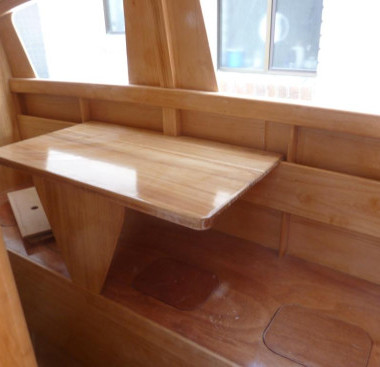

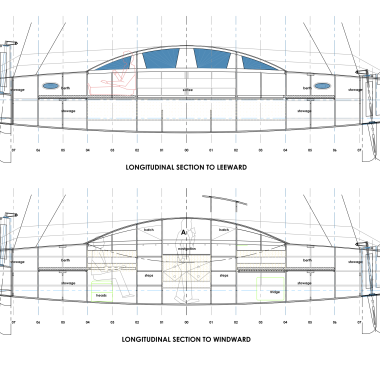

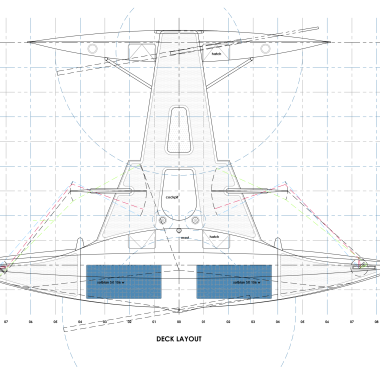
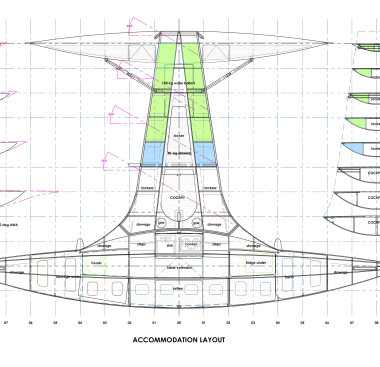
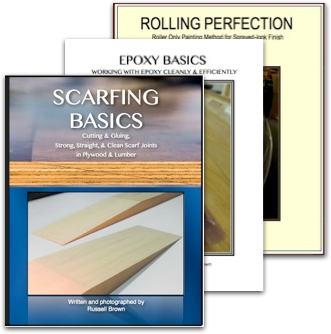
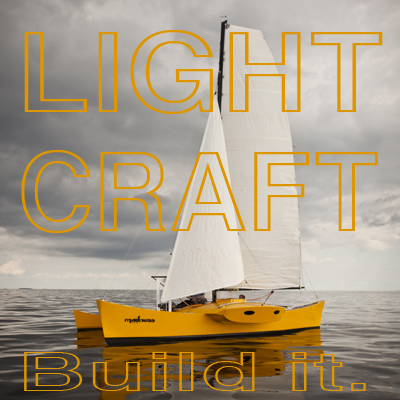
Most excellent!
Many thanks for posting.